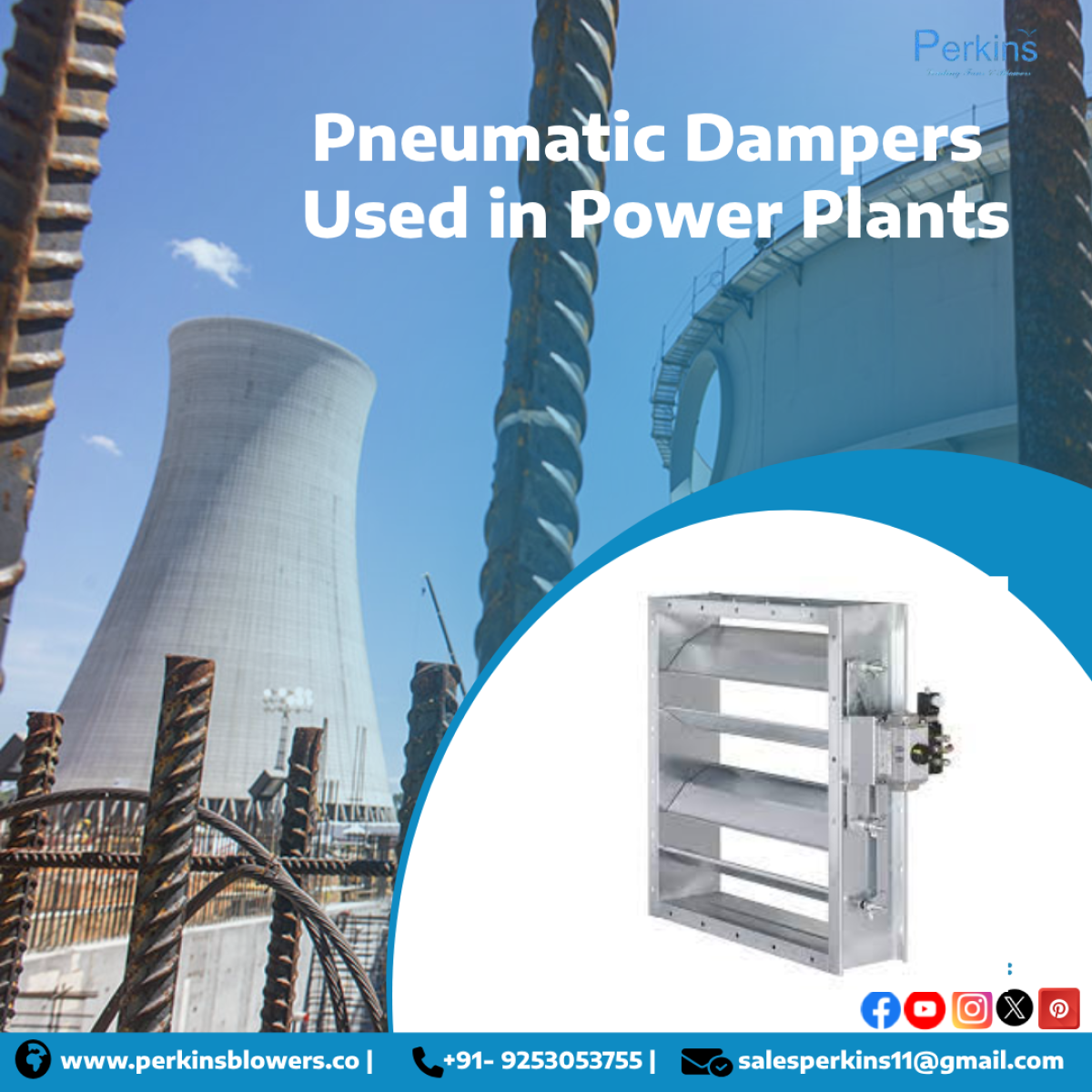
Introduction
In modern power plants, efficient air and gas flow management is essential to achieve optimum combustion, reduce emissions, and maintain overall plant efficiency. One of the key components that makes this possible is the pneumatic damper. Designed to regulate and control the flow of air and flue gases, pneumatic dampers play a vital role in ensuring smooth plant operations. At Perkins Blowers, we specialize in advanced damper solutions that meet the rigorous demands of power generation industries.
What are Pneumatic Dampers?
Pneumatic dampers are airflow control devices that operate using compressed air. These dampers consist of a series of blades or louvers that open or close to regulate air or flue gas passage within ducts, boilers, and exhaust systems. The pneumatic actuator enables fast and precise movement, making these dampers highly reliable in large-scale industrial environments like power plants.
Role of Pneumatic Dampers in Power Plants
In a power plant, controlling airflow is not just about efficiency—it’s about safety, compliance, and cost-effectiveness. Pneumatic dampers contribute in several ways:
-
Combustion Control – Proper airflow into boilers is critical for stable combustion. Dampers regulate the amount of oxygen supplied, ensuring efficient fuel utilization.
-
Flue Gas Regulation – Pneumatic dampers control the flow of flue gases in exhaust systems, helping in emission control and heat recovery processes.
-
Pressure Balancing – By adjusting air volumes in ducts and chambers, dampers prevent overpressure or vacuum conditions that could damage equipment.
-
Energy Efficiency – With precise air regulation, pneumatic dampers help minimize energy loss and improve overall plant performance.
-
Automation Compatibility – Since pneumatic dampers can be easily integrated with automated plant control systems, they ensure real-time adjustments without manual intervention.
Types of Pneumatic Dampers Used in Power Plants
Different sections of a power plant require different damper designs. Common types include:
-
Butterfly Dampers – Suitable for quick shut-off and flow regulation.
-
Louver Dampers – Provide efficient control in ducts and stacks, often used for flue gas management.
-
Guillotine Dampers – Ideal for complete isolation during maintenance or emergency shutdown.
-
Multi-Louver Dampers – Designed for large ducts, offering uniform airflow control.
Each type is selected based on airflow volume, temperature conditions, and system requirements.
Advantages of Pneumatic Dampers in Power Plants
-
Fast and Reliable Operation – Quick response to changing load conditions.
-
Durability – Built to withstand high temperatures and harsh environments.
-
Low Maintenance – Fewer mechanical parts reduce wear and tear.
-
Improved Plant Safety – Effective in preventing backflow and ensuring stable combustion.
Perkins Blowers – Your Trusted Partner in Damper Solutions
At Perkins Blowers, we manufacture high-quality pneumatic dampers tailored for the demanding conditions of power plants. Our products are designed with precision engineering, durable materials, and reliable pneumatic actuation systems. We focus on delivering:
-
Custom-built dampers for specific plant requirements.
-
High efficiency designs that optimize airflow and reduce energy costs.
-
Long-lasting performance with minimal downtime.
Whether it’s for combustion air control, flue gas management, or system isolation, Perkins Blowers offers solutions that ensure efficiency, safety, and compliance in power plants.
Conclusion
Pneumatic dampers are more than just mechanical devices—they are critical elements that contribute to the smooth and efficient operation of power plants. By choosing advanced damper solutions from Perkins Blowers, power plants can achieve better combustion efficiency, reduced emissions, and reliable long-term performance.
Read more The Role of Hot Air Blowers in Modern Food Processing
